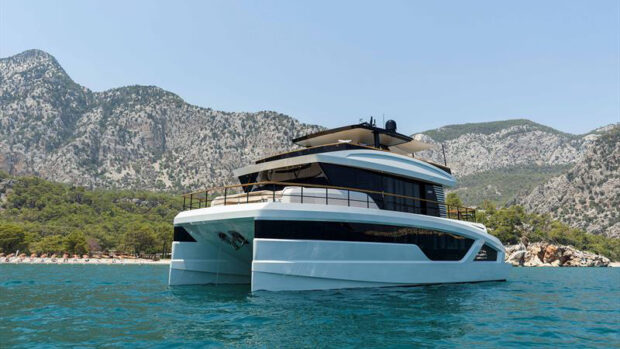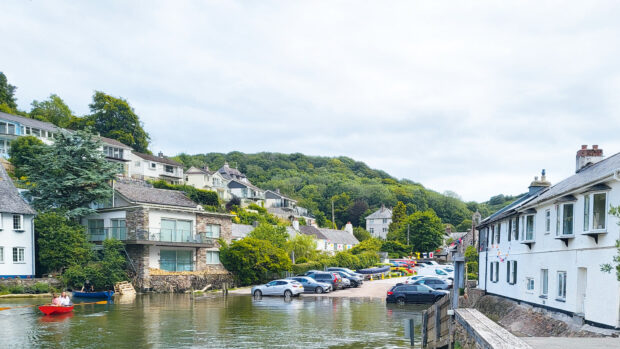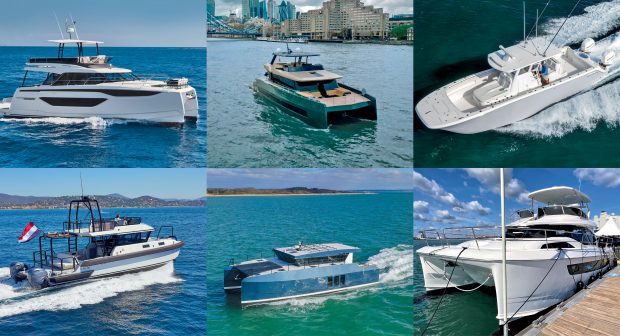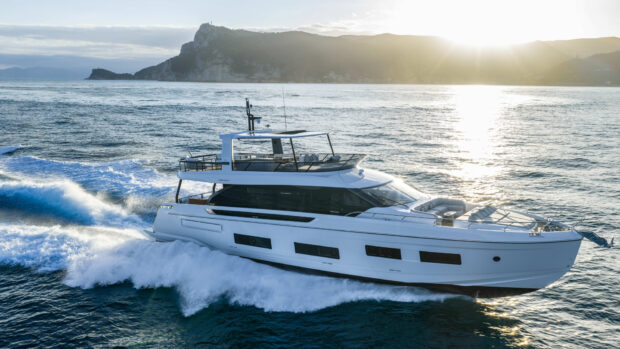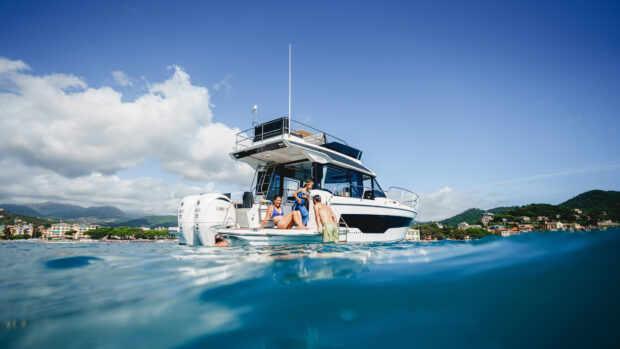Glen Stanford's journey into boating began purely by chance as he looked for a weekend hobby to fill the time after his children left home.
Surely by chance: that’s how my journey into boating began. I was working as a security guard at Canary Wharf, and as our children were starting to fly the nest, my wife and I were looking for a weekend hobby to keep us occupied. A friend at work mentioned he owned a boat and invited us to join them for a day out. When we arrived at North Fambridge marina and saw his Sealine F43, it felt like stepping into another world – the boat looked huge, as did the bills.
However, we soon discovered that everyone was really friendly. We ended up visiting quite a few times over the next few months, being invited to events at the marina and getting to meet a lot of new people. The social scene was great and nobody cared about the size of your boat. At the time, it did feel a bit out of our league.
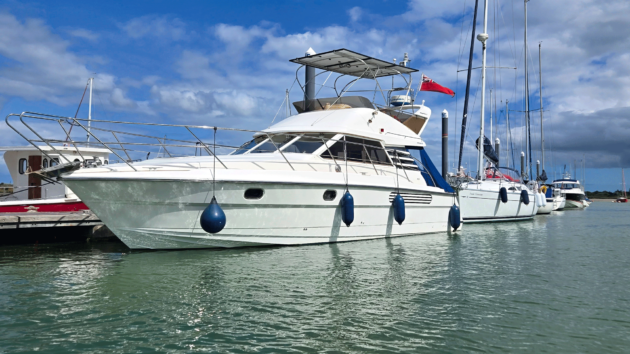
The £12,000 Crownline 27 that kickstarted their passion for boating
I was just starting my own one-man business, so money was tight and buying our own boat seemed beyond our reach. But when we heard there was a boat for sale just a few berths away from my friend’s, we couldn’t resist having a quick look. It turned out to be a lovely 27ft Crownline called Lazy Daze at an asking price of £12,000.
That was a huge sum for us back then but our new friends helped check it over – we still had no clue what we were doing– and after some hesitation, we decided to buy it. Despite losing a few nights’ sleep over spending all that money on a weekend hobby, we loved our new purchase and started spending all our weekends making the boat our own and enjoying the marina life.
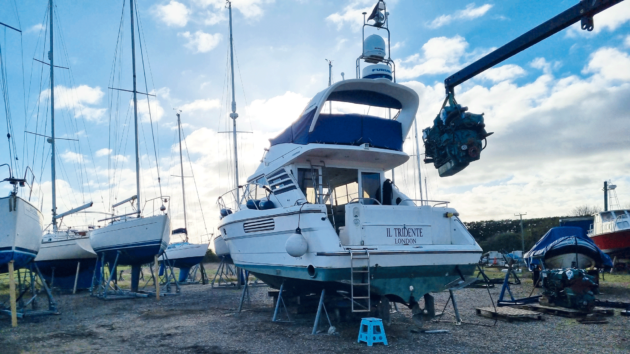
Glen’s Fairline Phantom 43 is constantly being upgraded to keep it up to date. Photo: Glen Stanford
We began learning everything about boating and all that comes with it. We found out about tides – quite important apparently – and soon after, I earned my first trophy at the annual laying-up ceremony. Unfortunately, this was for putting Milton sterilising tablets into our fuel tank instead of our water tank! We only discovered this error midway across the Raysand channel when the engine died.
Fortunately, some other new friends, John and Tracy, managed to tow us back with their 50ft Azimut.
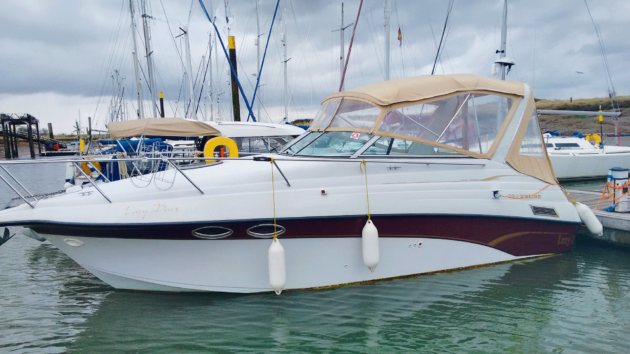
Glen now has 240V AC mains power without the need for a shorepower connection. Photo: Glen Stanford
Buying a boat for £55,000: Size Isn’t Everything
Our small boat did seem very little at times but we were never made to feel that way. The more time we spent at the marina, the more friends we made, which in turn led to more adventures. It seemed like every time we went on a new trip, we would learn something new.
One couple we met, Zoe and Graham, were mad on watersports. They had a Prestige 500 but also a speedboat. They taught us how to waterski, wakeboard and paddleboard on the River Crouch. Zoe also taught me the correct way to drink a Jack Daniels shot, but that’s another story!

Glen and Monica Stanford have found a whole new group of friends through boating. Photo: Glen Stanford
Fortunately, and some would say surprisingly, my one-man business started doing quite well. This led to the question that all boaters eventually ask themselves – bigger boat? Again, by a stroke of luck there was a boat opposite ours that was for sale. Il Tridente was a Fairline Phantom 37 and was our dream boat.
It had masses of space for entertaining, a big flybridge and two diesel engines – for some reason my wife wasn’t overly keen on being stuck out at sea again when your only engine dies! Unfortunately our dreams were crushed as the asking price was £75,000 and our maximum budget was £50,000.
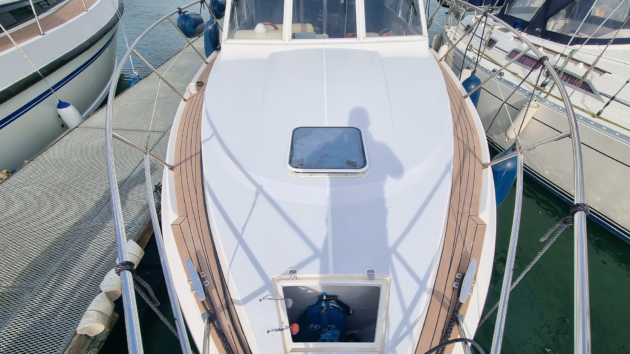
A few coats of non-slip paint and some new Flexiteek side decks fixed that problem. Photo: Glen Stanford
We spent the next few months looking at lots of other boats for sale all over the south of England but none of them impressed us. We would always come back to our marina and sit on the back of Lazy Daze looking at the boat we really wanted to own. About three months later, I had almost given up hope when the owner of Il Tridente stopped me, held out his hand and said, “Glen, £55,000 and it’s yours.” Needless to say, I immediately shook his hand and the next thing I knew we were stepping onto our dream boat.
It is hard to put down in words how overwhelmed and happy we were. It was only after we had bought the boat that we discovered the owner had received a devastating medical diagnosis and was liquidating all his assets to make things easier for his family. We had barely registered this sad news, when we then heard that the test results had been a mistake and he was completely fine all along so it was a win-win all round, I think?
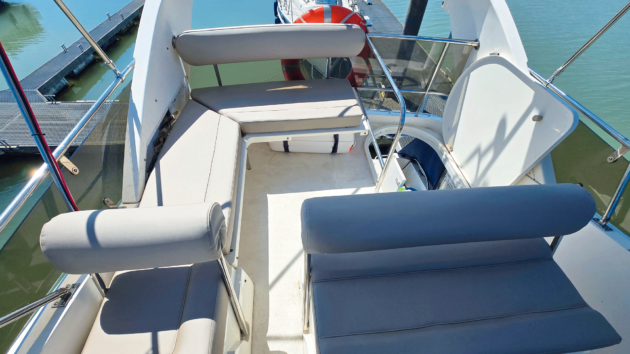
Modern waterproof fabric in a more contemporary colour scheme lifted the look and feel of the outside seating. Photo: Glen Stanford
Slippery Slope
Il Tridente had lots of good points and one bad point: it had spent a lot of time in the Med. This meant that the gelcoat was covered in crazing – fine cracks resembling a spider’s web caused by long-term exposure to harsh sunlight. Luckily, I’d made another friend, Rob, who ran Brooklands Marine and was known as the gelcoat doctor.
He prescribed a couple of coats of non-slip paint on the foredeck and the addition of Flexiteek artificial teak decking. Our boat instantly looked and felt much smarter and more modern. He also applied Coppercoat to the hull to save me having to add another layer of antifoul on it every year.
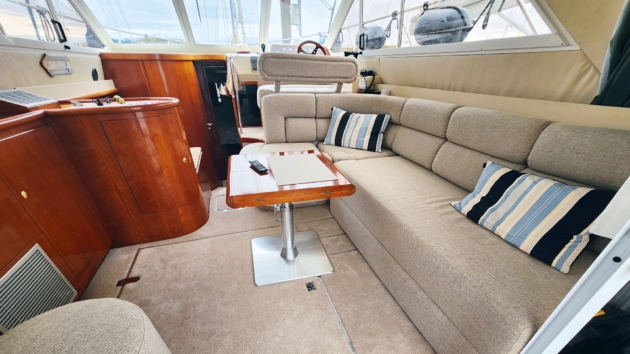
Fresh carpets and upholstery in the saloon worked the same magic on Il Tridente’s interior. Photo: Glen Stanford
These upgrades made me love our new boat even more. The trouble was that they made other aspects of the boat look tired and dated by comparison. So I asked Andrew Watson & Sons of Burnham to change the carpets throughout. That left the furniture crying out for a refresh and this time I asked Martin at MJM Boats Ltd to reupholster both the internal and external seating. I honestly can’t recommend these people enough; they were both so helpful.
All of this took time but by now I had really got the boating bug and kept upgrading as money became available. Much like a gardener’s potting shed, I was always on the boat fixing or improving something. This was quite a learning process as I’d never done anything like this before. Now with the help of my friends I was learning everything from engine maintenance to boat-handling techniques.
Article continues below…
Engines Out
It was then we hit our first real problem. One of the fuel tanks was leaking and in order to fix it we would have to take both engines out. The mere thought of it sent a shudder down my spine. Thankfully, a trio of friends who work at the marina rode to the rescue.
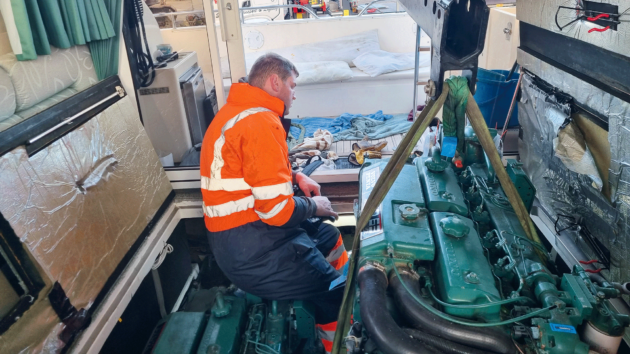
Lifting the engines out one by one through the saloon doors was a true test of man and machine. Photo: Glen Stanford
Adam, Beth and Boysie helped me through the process, preparing both engines and putting me in touch with a man called Ronnie Downs, who could remove Il Tridente’s diesel engines with his mobile crane. I couldn’t believe it when he turned up on his own to remove those two huge lumps but the skill and precision he used to lift the engines out with minimal fuss and endless good humour was truly remarkable. It turned what could have been a really stressful day into a genuinely good laugh.
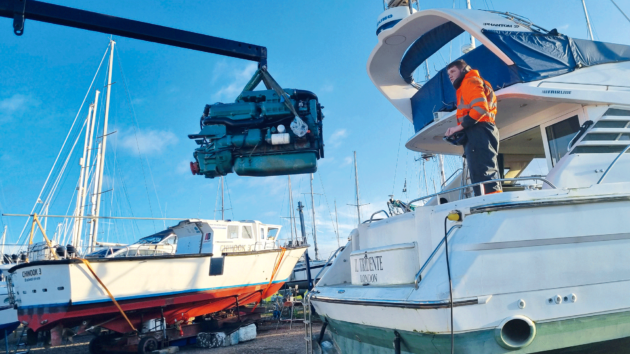
Removing the engines was a big worry but thanks to his new friend and contacts it all went remarkably smoothly. Photo: Glen Stanford
Once they were out, it made sense to sort various other jobs such as painting the bilges and reconditioning the engines courtesy of two mechanical engineering friends Ian and Phil. I also changed the stern glands and all the bolts holding them in. After everything was done, Ronnie and his truck returned and a couple of hours and a few bacon butties later, the engines were back in.
Adam and Beth reconnected the engines and made sure the shafts were aligned properly. What had seemed like a terrifyingly big and expensive task had all gone remarkably smoothly thanks to the support of my local boating community.
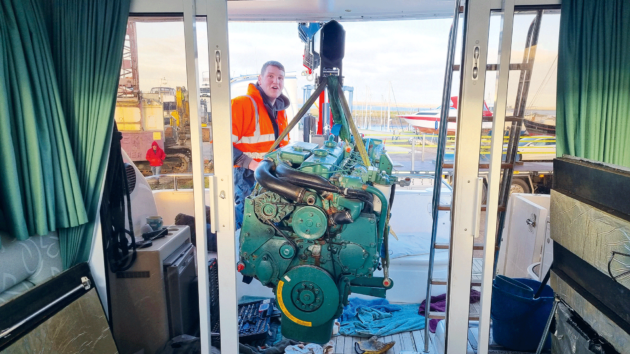
All in a day’s work for Ronnie Downs and his mobile crane. Photo: Glen Stanford
Cover Up
Having come this far, it seemed a pity not to complete the job by changing the old canopy, which was looking tired and compromised the view out from the saloon. I called KLS Marine, another recommendation from fellow bertholders, who came to the boat and used some super fandango laser machine to measure it all up.
Much to my surprise, the new covers fitted perfectly and the extra window panels we had asked for really improved the look of the boat and the views from the saloon. By now the boat was in tip-top condition, having also added cameras in the bilge, exhaust alarms and new VHF radios with AIS, but I wasn’t done yet.
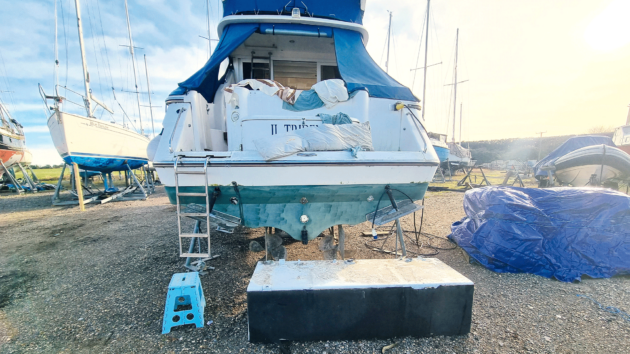
A leaking fuel tank meant the engines had to come out before the tank could be removed. Photo: Glen Stanford
It took me a while to think of what else could be improved but eventually I found a new project. We really enjoy anchoring overnight and the one thing that drives us mad is not having 240V power. Our boat already had an inverter installed but using it drained the batteries so quickly that I ended up having to change them twice in one year – an expensive mistake. I started looking into generators but came to the conclusion that as well as being relatively big, noisy and expensive, they were almost more hassle than they were worth.
I looked into solar power instead but all of the installations I had seen were over-complicated, needing inverters, controllers and a PhD in theoretical physics just to run the damn things. But then I came across those portable lithium-ion power banks that combine everything into one box. I bought a 6kWh Bluetti powerbank and linked it directly into the boat’s electrical system.
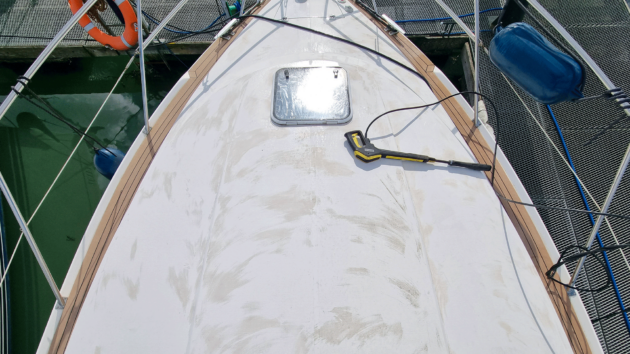
Work begins on the sun blemished decks of their bargain-priced Fairline Phantom 37. Photo: Glen Stanford
The boat now has 240V all the time so no-one has to ask if they can boil a kettle or run a hairdryer. It’s so much more convenient and a lot quieter than a diesel generator.
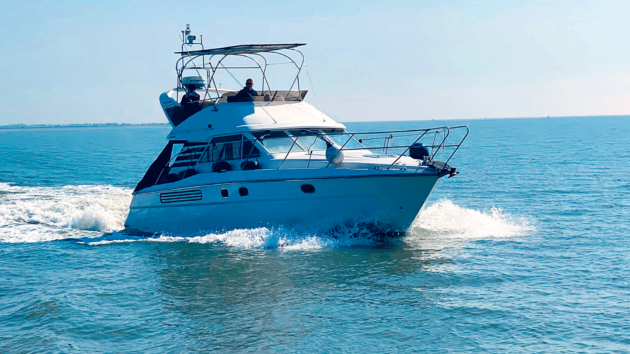
‘I have seen so many new places and met so many new friends’. Photo: Glen Stanford
Solar Power
This then led me to phase two – how to supply this beast with power. After doing the calculations, I settled on three 440W domestic solar panels. Although I’m not sure how they will hold up to a marine environment, they cost just £65 each as opposed to flexible marine panels that cost £500 to £700 each. To mount them, I called in Joe from Salty Dog Speed Shop.
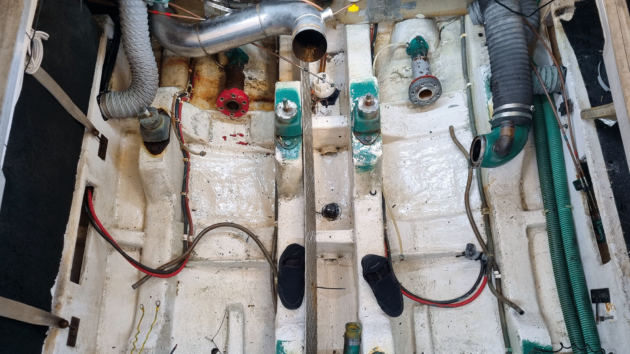
nce the engines were out, it made sense to clean and repaint the bilges as well as fit new sternglands. Photo: Glen Stanford
The idea was to use the flybridge bimini bars by straightening the tops of them enough to support the mounting rails. I made all the measurements, worked out what should go where and how. Joe then threw that all away and did it properly! Slowly but surely the panels went up and everything started taking shape.
This was the stressful part of the build because I was under strict instructions from Monica that if it looked ugly, it would all have to come down. Now I know this is subjective, but I think it looks OK and my wife is more than happy with it, although that may be because she no longer has to ask me which button to press every time she turns on an appliance. The performance also exceeds my expectations.
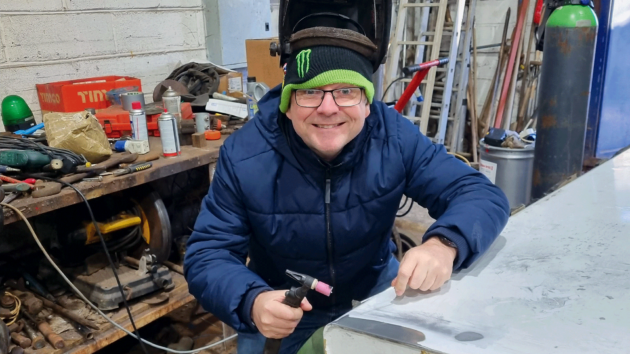
Welding the fuel tank, after ensuring every last drop of diesel was drained from it! Photo: Glen Stanford
On a sunny day the solar panels generate up to 1.2kW of energy, keeping the powerbank topped up and meaning the boat can happily operate completely off grid. I don’t even bother plugging in to shorepower even though I have two fridges and the battery charger on all the time.
In fact, it’s working so well that when I travel in company, the other boats often plug in to mine to charge their batteries. Our friends Ian and Sarah, always plug their sailing boat into my boat when we’re at anchor together, syphoning off the excess electricity it generates during the day. I’ll have to keep a close eye that he doesn’t start on my diesel next!
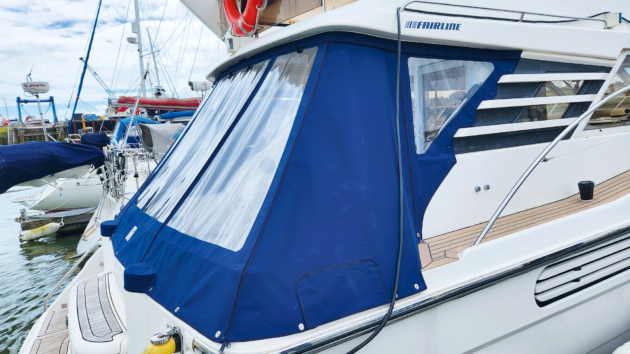
The cockpit canopy was another victim of Glen’s refit obsession, replaced by a new one with bigger windows. Photo: Glen Stanford
Just Do It
Thanks to boating I have seen so many new places and met so many new friends. I would recommend anyone give it a go, irrespective of size, budget or style of boat. The ability to take friends and family out on the water, to sit in the river and watch the sun go down, these are the kind of priceless memories that no other hobby can give you. Go on, give it a try!
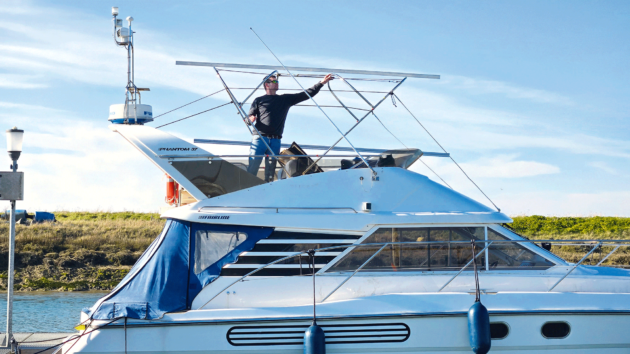
Adapting the original bimini frame to mount the solar panels required some skill but the end result is neat and remarkably effective. Photo: Glen Stanford
Refit costs
Foredeck repaint: £160
Flexiteek side decks: £1,500
Coppercoat: £5,000
Propspeed propeller antifouling: £510
Engine removal and DIY refurb: £1,660
New carpets: £1,920
Interior upholstery: £1,900
Bluetti powerbank: £1,798
New canopy: £2,178
Raymarine RAY91 VHF/AIS: £1,713
Solar panels: £260
Solar fit and bimini reshape: £1,368
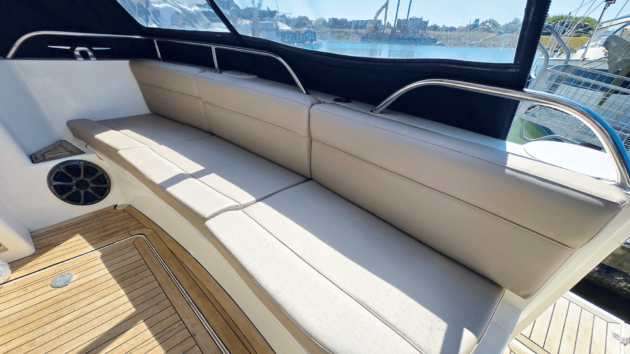
The exterior upholstery in the cockpit and flybridge was next on the refit list. Photo: Glen Stanford
 If you enjoyed this….
If you enjoyed this….
Motor Boat & Yachting is the world’s leading magazine for Motoryacht enthusiasts. Every month we have inspirational adventures and practical features to help you realise your sailing dreams, as well as tests and news of all the latest motorboats.
Plus you’ll get our quarterly Custom Yachting supplement where we share the last on offer in the superyacht world and at the luxury end of the market.
Build your knowledge with a subscription delivered to your door. See our latest offers and save at least 30% off the cover price.
Note: We may earn a commission when you buy through links on our site, at no extra cost to you. This doesn’t affect our editorial independence.


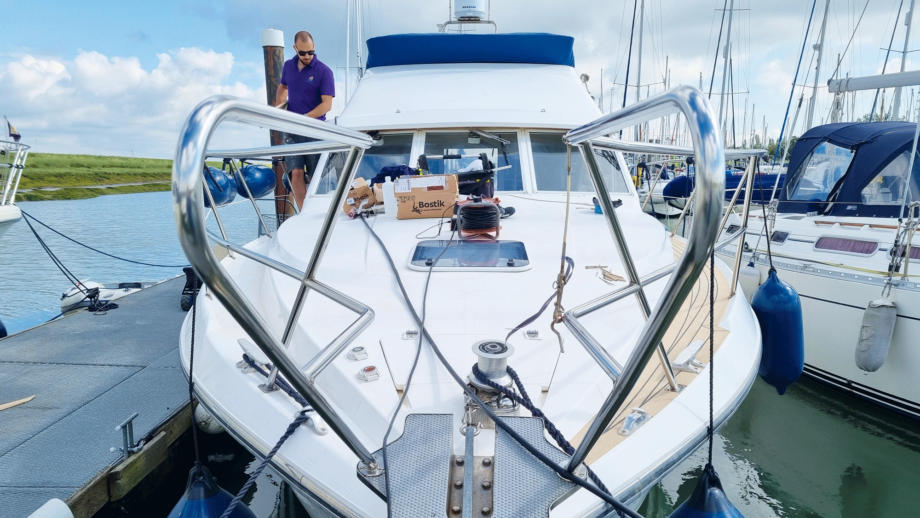
 If you enjoyed this….
If you enjoyed this….